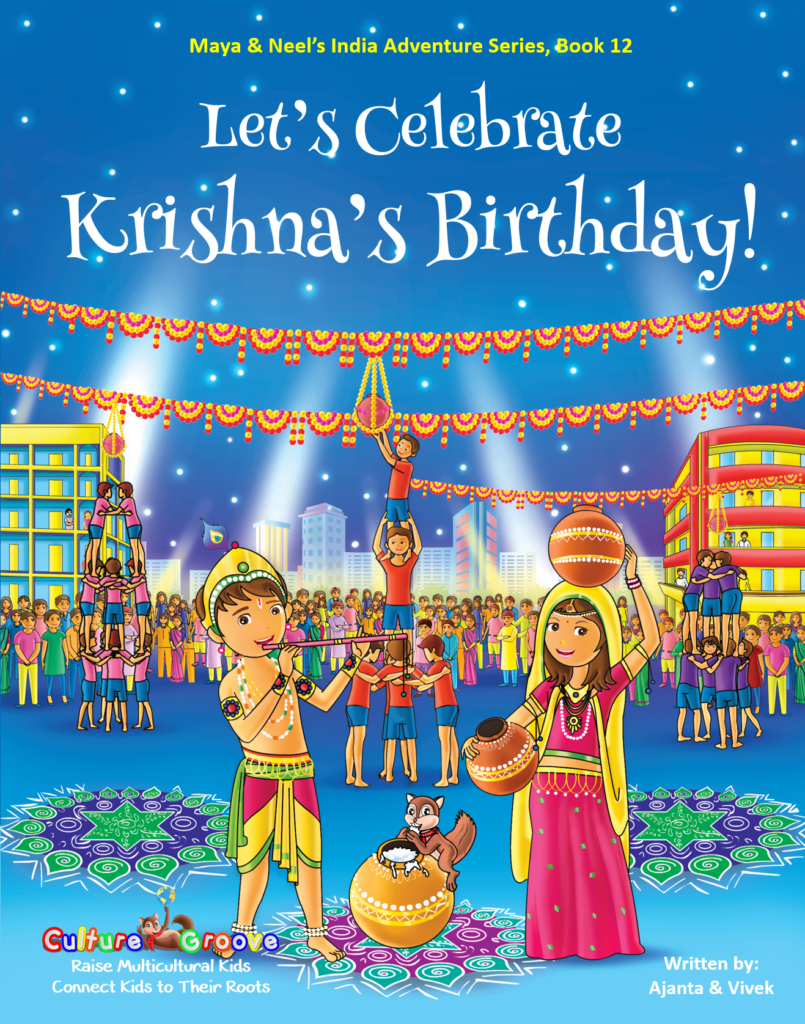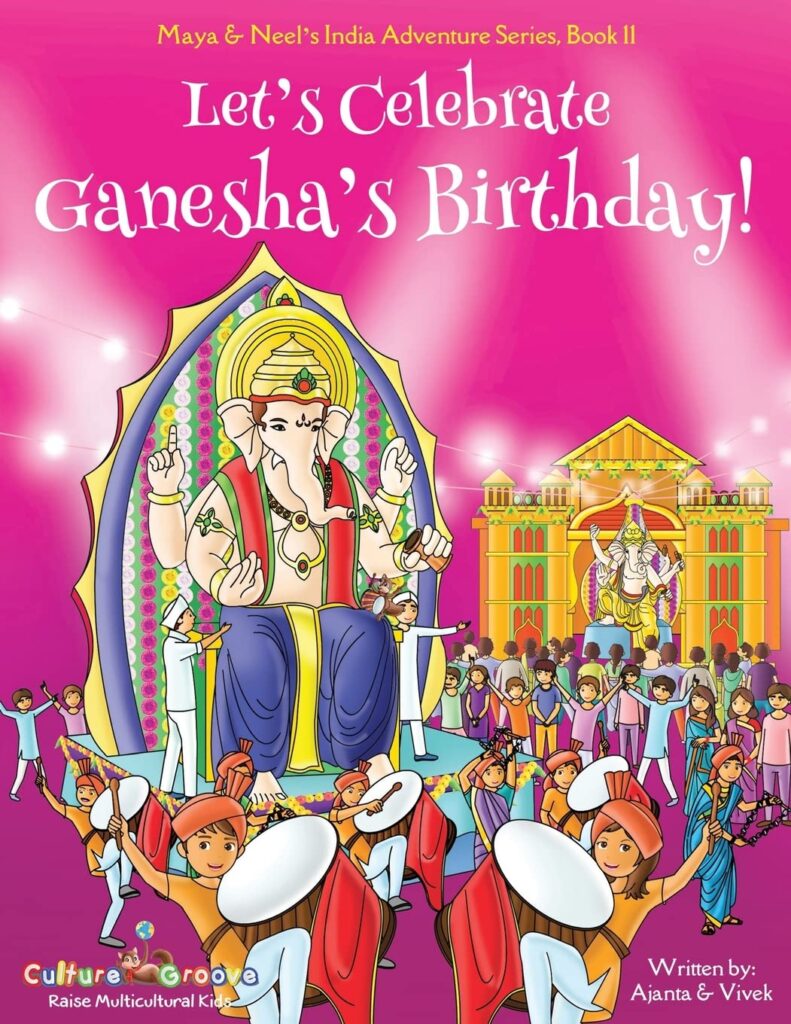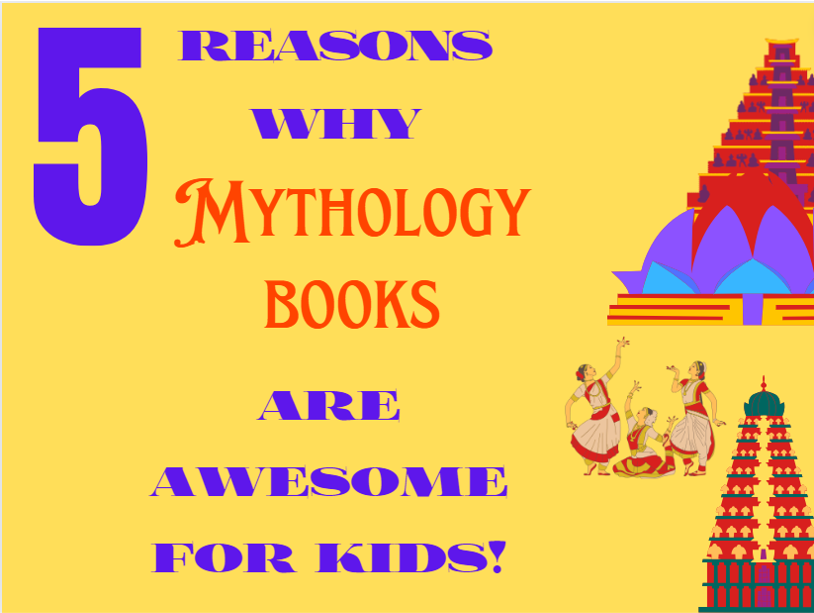
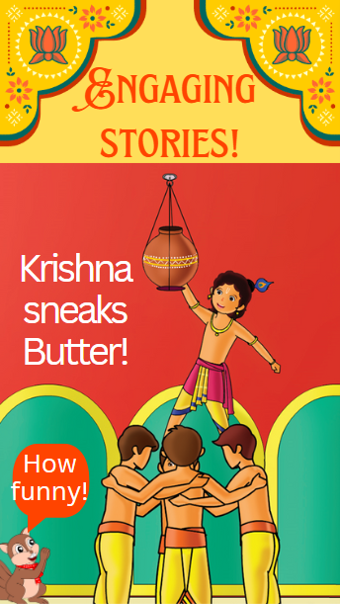
1. Engaging Stories
Myths are typically filled with compelling stories that capture the imagination.
These narratives often feature heroes, gods, and magical creatures that intrigue children and hold their attention.
This makes learning about the culture that produced these myths more enjoyable and memorable.
For example, the delightful story of Krishna sneaking butter makes every child smile!
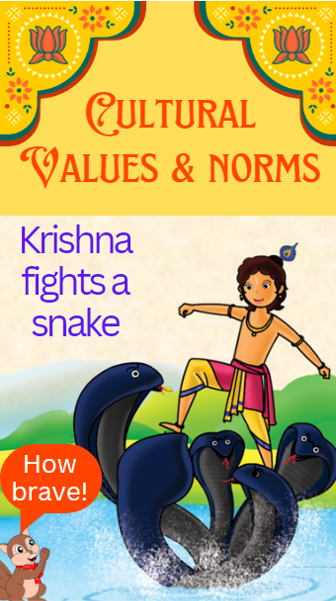
2. Cultural Values and Norms
Myths often reflect the values, morals, and societal norms of the cultures they come from.
Through these stories, children can learn about what various cultures might value in terms of bravery, wisdom, honesty, and other virtues.
This helps children understand and respect cultural differences.
For example, Hindu mythology has numerous stories about bravery, about taking a risk for the benefit of the masses, and so on. The story of Krishna facing the fearsome Kaliya demonstrates exactly that!
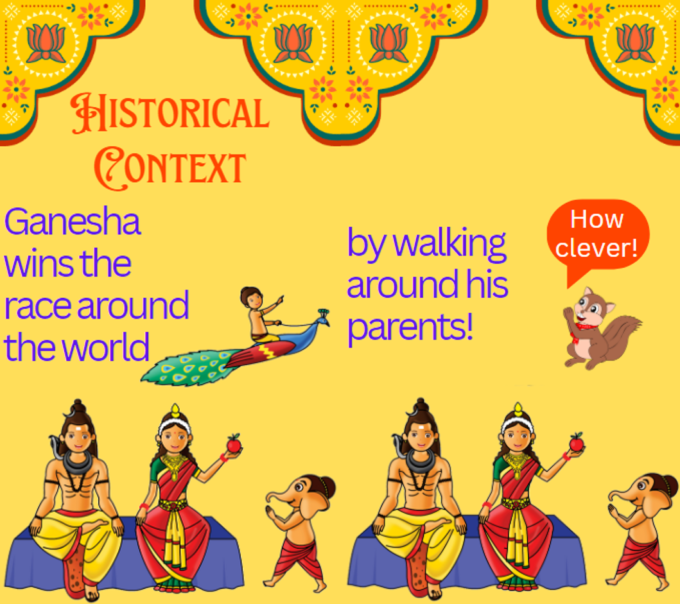
3. Historical Context
Many myths are steeped in the historical and environmental context of a culture.
They can provide insights into how people in those cultures lived, what they feared, what they celebrated, and how they explained natural phenomena or the universe around them.
For example, wit and intelligence has long been celebrated around the world over brute strength. Ganesha, known for his wit and wisdom, is believed to have won a contest with his brother of racing around the world by simply circling around his parents and calling them his “world”!
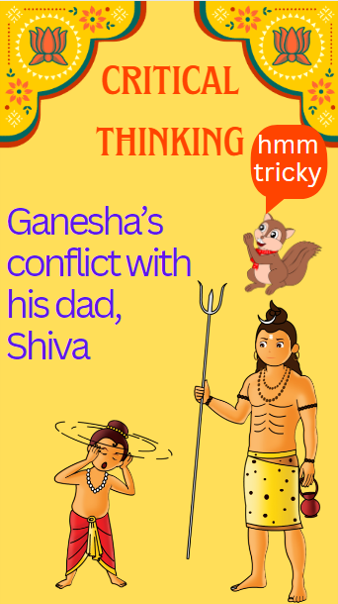
4. Critical Thinking
Myths often present complex narratives with moral dilemmas and philosophical questions.
This can help children develop critical thinking skills as they analyze the characters’ decisions and the consequences of those decisions.
For example, Ganesha’s mother asked her to guard the door as she took a bath. Shiva, Ganesha’s father and who Ganesha had never met before, tried to enter. Ganesha fearlessly takes on the mighty Shiva and even gets injured in the process. It sure provides something to think about to the kids!
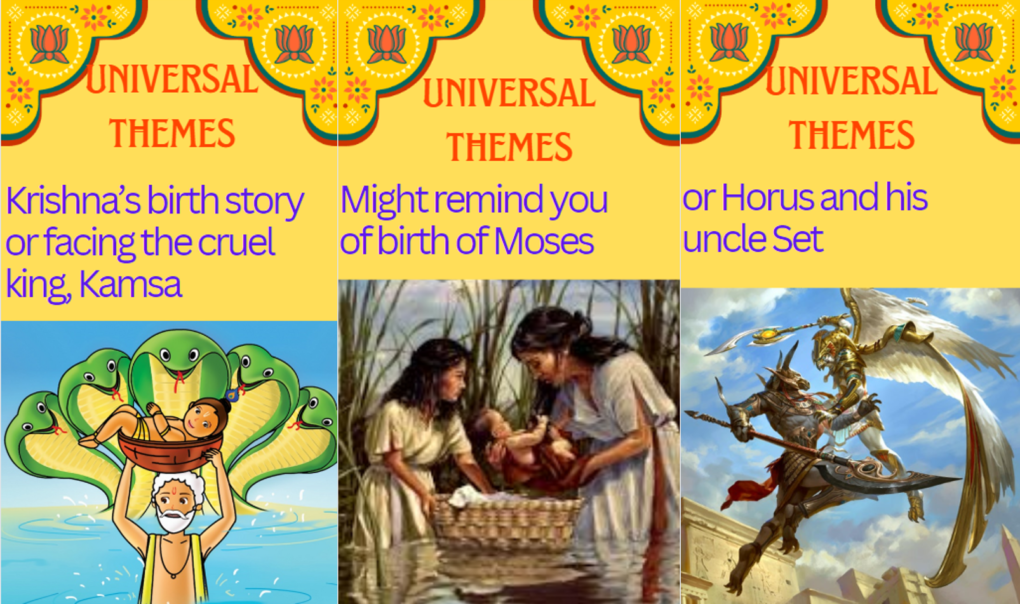
5. Universal Themes
While myths are culturally specific, they often deal with universal themes like love, conflict, adventure, and transformation.
This can help children see the commonalities between their own culture and others, promoting empathy and global awareness.
For example, the story of Krishna’s father carrying him in a basket on his head and crossing a river to take Krishna to safety, sounds a bit familiar to Moses in the basket.
Similarly, Krishna facing his evil uncle, Kamsa, in a battle is similar to the stories of Horus and Set!
Get our Krishna and Ganesha books
Embark on a delightful journey through Indian mythology with our children’s books, “Let’s Celebrate Krishna’s Birthday” and “Let’s Celebrate Ganesha’s Birthday”.
Perfectly tailored for a global audience, these books bring the enchanting stories of Krishna and Ganesha to life in a way that’s fun, educational, and suitable for young readers aged 3-8.
Each book is filled with vibrant illustrations and age-appropriate narratives that capture the essence of India’s rich cultural heritage.
Whether uncovering Krishna’s mischievous escapades or marveling at Ganesha’s wisdom, these stories are designed to entertain, enlighten, and inspire curiosity in children, making them a fantastic addition to any family’s bookshelf.
